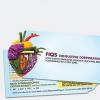Hello everyone, been a while and I know where exactly to go if I have questions, neve disappointed!
How does one go about validating their in-house micro testing?
So we pasteurize and bottle fruit juices, and do testing for TPC and Y&M on finished product. And I have some doubts about the way we plate/read/sample or the process as a whole for our micro sampling, we had fermented juice that was detected organoleptically, but on our plates, there was no growth at all shown... weird. We use "peel plates", where just pipette the juice, dispense it on the film, seal the film and incubate it.
What is the best approach to begin and implement a validation study to confirm what we do is correct?
I did reach out to a third party lab to coordinate sending them samples and comparing their samples with ours to see if there are any weird results.
Is this a right approach? or does anyone have any other suggestions?
Looking forward to hearing everyone's expertise on this.















